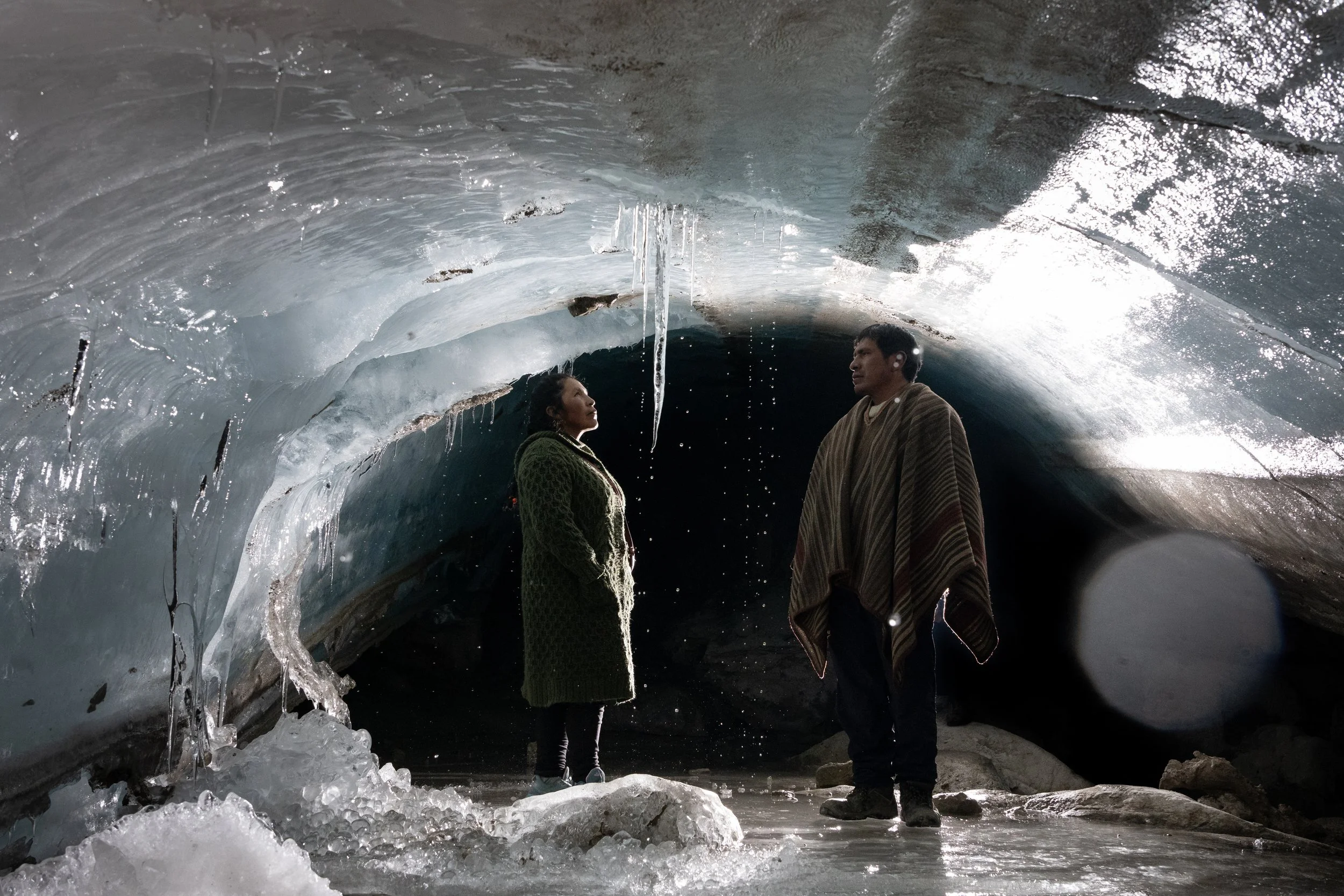As told to Photographers Without Borders by Matt Stirn
I have always felt at home in the mountains. I love the smell of the alpine shrubs, the frigid breeze flowing off of a glacier, and the glow of the rising sun on a granite cliff. When I try to summarize my fascination with mountains and a career spent amongst the towering peaks, I struggle and am often left with a simple yet resonating feeling: life is just different up there. The mountains are something special, someplace truly unique that hold a sacred role in cultures across the world.
As both an archaeologist and a photographer I have devoted my career to exploring and understanding this magical landscape, so when Photographers Without Borders offered me the opportunity to lead a photography Journey to anywhere in the world, my mind immediately veered towards the peaks and landed on Nepal and the Himalayas, a place I have longed to experience.
Wind River Range, Wyoming.
PHOTO: Matt Stirn
It All Started Beneath the Ground
I am an archaeologist by training, a profession that has taken me around the world to uncover and investigate clues about past cultures. Over the years I’ve worked in jungles and deserts, up in the clouds, and under the sea, spanning 8 countries across four continents. While my career has provided a fascinating vehicle to travel, my interests have always focused on mountain cultures and how human beings throughout the world came to live and thrive in high, alpine environments.
For the last 10 years I have directed archaeological projects in the Rocky Mountains in an attempt to understand how ancient cultures made a living in the high terrain. My colleagues and I have discovered prehistoric villages above the treeline, 10,000 year old hunting camps, and wooden artifacts melting out of glaciers. It’s often easy to trick ourselves into thinking that the age of exploration is over, that because of technology and omnipresent information, there are no secrets left in the world. This couldn’t be less true and for those willing to take a step into the unknown the rewards can be life changing. So what does digging up broken pots have to do with photography? For me, just about everything.
Members of an archaeological and climate science research team extract a deep ice core from an ice patch in northern Wyoming.
PHOTO: Matt Stirn
While working on archaeological projects, both in the Rockies and abroad, I always carried a camera. It started off for science (as all good things do) as I found that photography offered a great platform to share discoveries and everyday life of academics in the field. Over time though, it became something more. I discovered that during my research and the travels to and from digs around the world, images could offer a more resonating message than the bars and charts of scientific data. It provided a platform not only to educate, inform, and share the sense of adventure, but also to make people care.
A lone archaeologist takes the high road back to camp after a long day in the Teton Range.
PHOTO: Matt Stirn
A World of Photography
Archaeology and travel photography naturally go hand in hand. Our digs are often located far off the beaten path, and often plant us in rural villages, frontier towns, or other remote destinations that we’d likely otherwise never visit on our own. There’s something truly special to me about this experience, about being planted in the unknown and being able to explore something for the very first time. We are bombarded with imagery across Instagram, Facebook, and other social platforms making it difficult to plan a trip and have no preconceived expectations. Popular and famous destinations especially have grand reputations that precede them, preparing us for what to expect before we even hop on the plane. A relatively unknown or unexpected location though, is a blank slate that allows us to truly explore and create a new and personal narrative about the experience.
Port of Essaouira, Morocco.
PHOTO: Matt Stirn
Beyond offering spectacular itineraries, being an archaeologist has also taught me how to look at travel photography in a new light. Archaeology is an amazing field of science in that it requires a complete study of a place and it’s people in order to succeed. We look at everything people do (diet, religion, culture practices, architecture, technology) and consider how people interact with and are affected by the landscape, climate, geology, and ecology of a particular area. In order for us to create a story about the past, it is crucial to remember that everything is connected and ultimately intertwined. This aspect of all-inclusiveness has been a driving force behind how I approach photography.
To tell an engaging story about a place, a culture, an animal, or an organization, I often reflect on my training and try to look far beyond the obvious aspects of the subject. How does their home and landscape influence them? How has culture, both human and animal, developed the story? What is happening behind the scenes that isn’t immediately apparent? Over the years these skills have helped me grow as a professional photographer and have allowed me to cover an exciting variety of topics. From photographing critically endangered primates in Central America, to high-elevation ice drilling in Montana, to ancient Greek vessels in Athens, I feel fortunate that my work has developed into a diverse and exciting career.
Meteora, Greece.
PHOTO: Matt Stirn
PWB and Off to Nepal
I first joined the Photographers Without Borders community in 2017 when I participated in a master workshop in Sumatra that was focused on documenting rainforest destruction and orangutan rehabilitation. Since then I have been on two PWB assignments to Central America (I write this from a hammock while on a PWB conservation assignment in Panama) working with NGOs on conservation projects and endangered species surveys. PWB is really a special group as they foster social justice, conservation, awareness, and ultimately hope by connecting passionate storytellers and organizations around the world. They help bring a powerful voice to stories that might otherwise struggle in being heard by a global audience. It’s been a wonderful organization to be a part of and I cannot wait to join them yet again in Nepal this October.
Sumatra is the only location on the planet where apes, rhinos, tigers, and elephants can all be found in the same place.
PHOTO: Matt Stirn
Over the years I have both participated in and worked at photography workshops, and every time I walk away increasingly amazed at their power to inform and inspire everyone involved. When I joined the PWB master workshop in Sumatra, I flew across the world with six strangers with nothing in common except for our cameras and love of photography. We had varying levels of experience, and all completely different interests. I loved culture and travel, another person shot mainly weddings, another outdoor adventure, and another pet portraits in Miami Beach.
Almost immediately though, we formed a tightly-knit group who helped each other, brainstormed, daydreamed, photographed, and, ultimately, soaked up one of the grandest adventures of our lives. I think we all walked away from Indonesia as different photographers and with a new outlook on how we could use our crafts and our passions to make a positive change in the world.
Bukit Lawang, Sumatra.
PHOTO: Matt Stirn
When designing the PWB Nepal Journey for this October, I wanted to craft an experience that explored photography and blended my passions of travel, wildlife, and mountain landscapes. I wanted to offer another trip-of-a-lifetime that could teach and inspire both brand new photographers and those with a bit more experience under their belt. I am thrilled with the itinerary we’ve crafted and am already dreaming of the markets of Katmandu, evening chats on the deck of a mountain teahouse, the excitement of waking before the sun in search of elusive tigers, and the grandeur of the Himalayan peaks. The mountains have guided me through life and have taught me to explore, to see, and to learn. So, if you also share a zest for exploration, love for travel, and an interest in capturing our magical world, join me in Nepal October 16 - 25 for what will be a truly unforgettable experience.
To see more of Matt Stirn's work, visit his website or follow him on Instagram, @mattstirn.


















